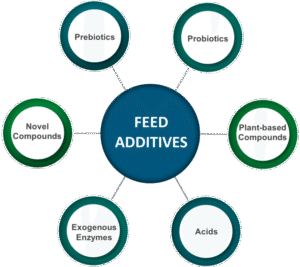Arachnids, a class that includes spiders, scorpions, ticks, mites, and other similar creatures, have evolved various mechanisms to capture and subdue their prey. Each group within Arachnida employs unique strategies, adapted to their environment and hunting style. Below is an overview of the prey-capturing mechanisms found in different members of this class:
1. Spiders (Order: Araneae): Spiders are among the most diverse hunters in the animal kingdom, employing several sophisticated methods to capture prey:
Web Construction:
Orb Webs: Many spiders, like orb-weavers, spin intricate webs that act as passive traps to catch flying insects. The sticky silk of the web entangles prey, preventing them from escaping.
Funnel Webs: Some spiders, like funnel-web spiders, create tubular webs that guide prey into the spider’s waiting position, where it quickly strikes.
Sheet Webs and Cobwebs: These webs are flat and dense, trapping insects as they move across the surface. Cobwebs are irregular and used by house spiders to catch crawling insects.
Ambush Hunting:
Trapdoor Spiders: These spiders dig burrows and create a trapdoor at the entrance, camouflaged with soil and silk. When prey approaches, they burst out and drag the prey back into their burrow.
Jumping Spiders (Salticidae): Jumping spiders rely on excellent vision and agility to stalk and pounce on their prey. They actively hunt by moving close to their target before making a rapid, precise leap to capture it.
Venom Injection: Most spiders use venom injected through their fangs (chelicerae) to immobilize and digest prey. The venom contains enzymes that liquefy the prey’s internal tissues, allowing the spider to suck out the nutritious liquid.
2. Scorpions (Order: Scorpiones): Scorpions are predominantly nocturnal hunters that use their pincers (pedipalps) and stingers to capture and subdue prey:
Grabbing with Pedipalps: Scorpions use their powerful pincers to seize prey, holding it firmly while they deliver a venomous sting with their tail (telson). The pincers allow them to manipulate and immobilize the prey before injecting venom.
Stinger Use: The venomous sting is used to paralyze or kill the prey quickly. The venom varies in potency depending on the species, with some scorpions using a mild venom to subdue small insects and others possessing a more potent sting to tackle larger or more dangerous prey.
3. Ticks and Mites (Subclass: Acari): Ticks and mites have specialized feeding mechanisms that differ from active predation:
Attachment and Feeding: Ticks are parasitic arachnids that latch onto their host’s skin using specialized mouthparts called hypostomes. They inject anticoagulants into the host to keep the blood flowing as they feed.
Some predatory mites use sharp mouthparts to pierce the body of their prey, sucking out body fluids, while others inject digestive enzymes to break down the tissues.
4. Whip Scorpions (Order: Thelyphonida) and Pseudoscorpions (Order: Pseudoscorpiones)
Whip Scorpions (Vinegaroons): Whip scorpions, also known as vinegaroons, use their strong pedipalps to grab and crush prey. They also spray a defensive acetic acid solution, although this is primarily for defense rather than capturing prey.
Pseudoscorpions: These small arachnids resemble scorpions but lack a tail and stinger. They use their pedipalps to seize prey and inject venom from specialized glands located in their claws, paralyzing the prey before feeding.
5. Harvestmen (Order: Opiliones)
Generalist Feeding Behavior: Harvestmen, also known as daddy longlegs, do not use venom to subdue prey. They are omnivorous and feed on a variety of small insects, decaying plant material, and fungi. They rely on their strong jaws (chelicerae) to crush and consume their food.
Key Adaptations for Prey Capture in Arachnids
• Sensory Adaptations:
Arachnids possess specialized sensory hairs (trichobothria) on their legs and bodies to detect vibrations, air currents, and chemical signals from prey.
Jumping spiders have excellent vision due to their large anterior eyes, which helps them stalk and pounce on prey with precision.
• Silk Production:
Spiders use silk not only to construct webs but also to create draglines, which act as safety lines when they move or capture prey.
Some species, like bolas spiders, use a single silk line with a sticky globule to swing at and catch moths by mimicking the scent of female moths.
Thank you for reading. Don't forget to subscribe & share!









